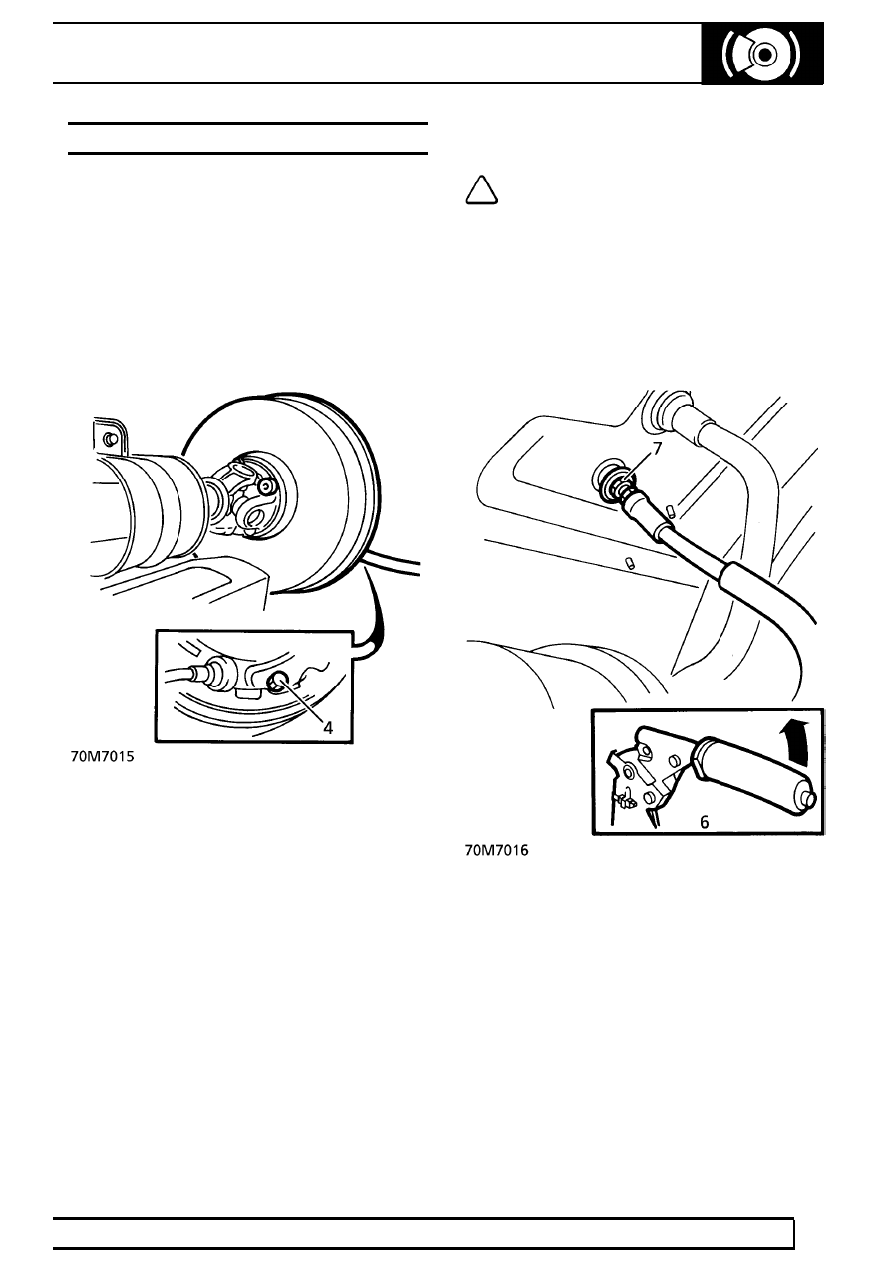Range Rover. Manual - part 203

ABS
1
ADJUSTMENT
PARKING BRAKE - ADJUST
Service repair no - 70.45.09
Adjust
Shoes
1. Raise vehicle on four post lift.
2. Ensure brake lever is released. Raise lift.
3. Raise one rear wheel clear of lift.
4. Tighten brake shoe adjusting bolt to
25 Nm.
(18 lbf.ft). Ensure brake drum is locked.
5. Back off adjusting bolt by 1.5 turns. Check brake
drum is free to rotate.
Cable
NOTE: Ensure brake shoes are correctly
adjusted before adjusting cable. Cable
adjustment is for new cable or to
compensate for cable stretch. Cable adjustment
must not be used to take up brake shoe wear.
6. Parking brake should be fully operational on the
third notch of ratchet with a pull of 15 kg. (30 lbs)
on end of the brake lever.
7. To achieve this, release brake lever. From under
vehicle, adjust length of outer cable.
8. Lower vehicle.